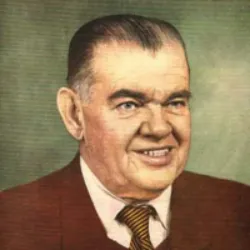Country music had its origins in pioneering recordings

Country music had its origins in pioneering recordings made by Cornélio Pires in 1929, compiling stories and traditional rural songs from Brazil. Initially known as country music, it stood out for its lyrics that portrayed country life. Artists such as Tonico and Tinoco, Tião Carreiro & Pardinho and Belmonte & Amaraí contributed to its evolution, incorporating new styles and instruments. After the Second World War, country music went through a new phase, becoming more romantic. Events such as the Festa do Peão de Barretos, from 1956 onwards, helped to further popularize the genre.
Country music, born in Brazil in the 1910s

Country music, born in Brazil in the 1910s, is known for its compositions such as modas and emboladas, with the viola as a highlight. Originating from urban and rural composers, sertanejo is now one of the most popular genres in the country, especially in states such as São Paulo, Minas Gerais and Goiás. Countryside country music, with its roots in São Paulo bandeirismo, is the most prominent style. Country music gained prominence in the countryside of São Paulo, being recorded for the first time in 1929. The evolution of this musical genre has been the subject of debate, with some considering country music and country music as synonymous, while others see them as independent genres. Subgenres such as Caipira, Sertanejo Romântico and Sertanejo Universitário are included in MPB.
Test yourself with one of these challenges 👇
Discover some interesting facts about Sertanejo
The modern phase of country music began in the 1960s with

The modern phase of country music began in the 1960s with the introduction of the electric guitar by Léo Canhoto and Robertinho, inspired by Elvis Presley and country music. In the following decade, Sérgio Reis contributed to its popularization by adopting a cowboy look and recording traditional repertoire. In the 1980s, country music became massively commercialized with a romantic approach, resulting in several successful duos. At the same time, urban country music mixed elements of country music with MPB. Against this commercial trend, artists emerged who sought to rescue country traditions.
In the 2000s

In the 2000s, the music industry launched a movement similar to university country music, featuring a series of artists such as Bruno & Barretto, César Menotti & Fabiano, Gusttavo Lima, among others. This movement continues to grow, with new talents emerging mainly in Mato Grosso do Sul and São Paulo. The fifth phase, known as agribusiness, began around 2020, standing out for its exaltation of the countryside, agriculture and agribusiness. This new trend combines elements of traditional country music with modern influences, such as funk, rap and electronic music, attracting both traditional fans and aficionados of contemporary genres. Some artists highlighted in this movement include Ana Castela, Luan Pereira, Leo & Raphael, DJ Cris no Beat, among others.
Modern country dance has its roots in traditional dances

Modern country dance has its roots in traditional dances from the Brazilian interior, influenced by different cultures. Originating in the Greater São Paulo region and in the interior of the state, this form of dance is known as university sertanejo. It falls into the category of ballroom dancing in pairs, combining elements from other styles such as forró and samba-rock. In the south, vanerão stands out, while in the Central-West region "bailões" are common, characterized by lively music and simple steps.
Gusttavo Lima, artistic name of Nivaldo Batista Lima (Presidente Olegário

Gusttavo Lima, artistic name of Nivaldo Batista Lima (Presidente Olegário, September 3, 1989), is a Brazilian singer, songwriter, music producer and businessman, one of the names with the greatest impact and influence in Brazilian music. He started his career at the age of seven, playing in Trio Remelexo. In addition to releasing his voice on stage, Gusttavo Lima knows how to play guitar, viola, electric guitar, drums, bass and even accordion. The young man taught himself to handle the instruments.
Maiara & Maraísa is a sertaneja duo of Brazilian singers, composers

Maiara & Maraísa is a sertaneja duo of Brazilian singers, composers, multi-instrumentalists and businesswomen, formed by the twin sisters Maiara Carla Henrique Pereira and Carla Maraísa Henrique Pereira. They began their career singing authorial songs in the sertanejo style in concerts and festivals around Brazil. In March 2015, they recorded their first album, “Ao Vivo em Goiânia”, which was released in March 2016 by Som Livre and became a great success. Since then, they have released several albums. In addition, they also stood out for participating in TV programs, such as The Voice Brasil, and for performing in several states of the country.
HOME


